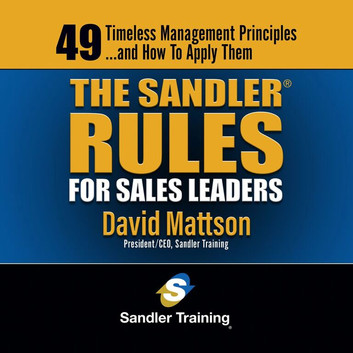The book written by Mattson outlining Sandler Rules as well as Core Concepts for sales is rather straightforward. Each rule/concept is only about a page and a half long and Mattson does a decent job getting his point across with few words. There are 4 in particular I find the most fascinating and the most useful for where we are as students today. I like to say that many of the rules (especially these 4) are even applicable to life outside of business:
Rule #18: Don’t Paint Seagulls in Your Prospects Picture
This rule was outlined within a story about a little girl painting a beach scene, to only have her teacher add a seagull to balance out the objects in the painting. The theme was to not force your buyer to see things from your side. It is more or less not putting words in people’s mouths – it leaves your buddy frustrated and feeling closed-off. This certainly is a life lesson as well because no one likes being told how to feel or think. Our reflex is to rebel when it seems as though we are being belittled. Asking questions and hearing people out is a practice that can be beneficial as a manager, employee, friend, or relative. So step back, listen, and be cool with having differing opinions.
Rule #39: When all Else Fails, Become a Consultant
Rule #39 is a way of “saving the sale.” It shows the buyer you are an expert by offering advice, while also not spilling your candy in the lobby. When I first read this rule, I saw it as a form of empathy. Instead of trying to sell, you become genuinely interested in the well-being of your buyer – you want them to get what they want, you want them to succeed even if it is not within your company’s offerings. Certainly this can be applied to regular, everyday conversations. We have all dealt with people who, under any circumstances, gets under our skin. Everything we say, they contradict. Fighting or trying to “one up” each other is not the way to go and will result in little productivity. Rather, listening to what the other person has to say and offering insight (not a counter-argument) could be more helpful than constantly going in circles.
Rule #45: Express your Feelings in Third Party Stories
Pretty straightforward – it is nicer and more considerate to tell other people’s experiences when trying to persuade a buyer than to stifle them with your own opinions. It more or less says, “if he could do it you can do it.” I appreciated this rule because it reminded me of working in food service. People sometimes care about what the wait staff thinks of the food, but it always went further to tell about how much other guests liked a particular thing on the menu. Outside of sales, telling stories gets you out of the “I” phase. Nobody likes the person that only talks about himself and what happens in his life.
Rule #7: You never have to like Prospecting, You just have to Do It
It is no fun. Hangups, doors in the face, countless nos. It happens. Not to beat a dead horse but failure will happen and it is not going to feel good. To be a Captain Obvious, failure is everywhere – not just sales. Unfortunately, we all have to do things we do not want to do. However, with every challenge comes lessons we can hold onto for life, much like a sales call that was a “no” teaches you how the next call you could get a “yes.” Persevering is even in the Bible… you know which one I am talking about.


This book offered so much info about the modern world of sales and not over stepping boundaries. I really enjoyed your feedback on some of your favorite rules.
Rule 45 was something I really enjoyed. I actually just wrote a post on that in general and some experiences I have had with that.